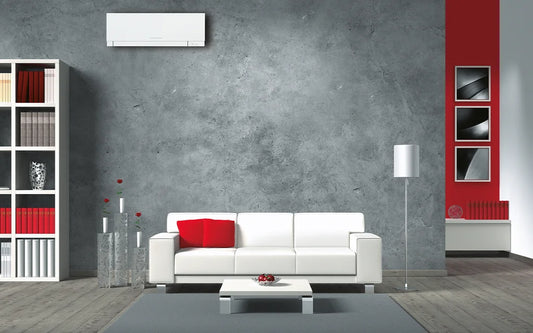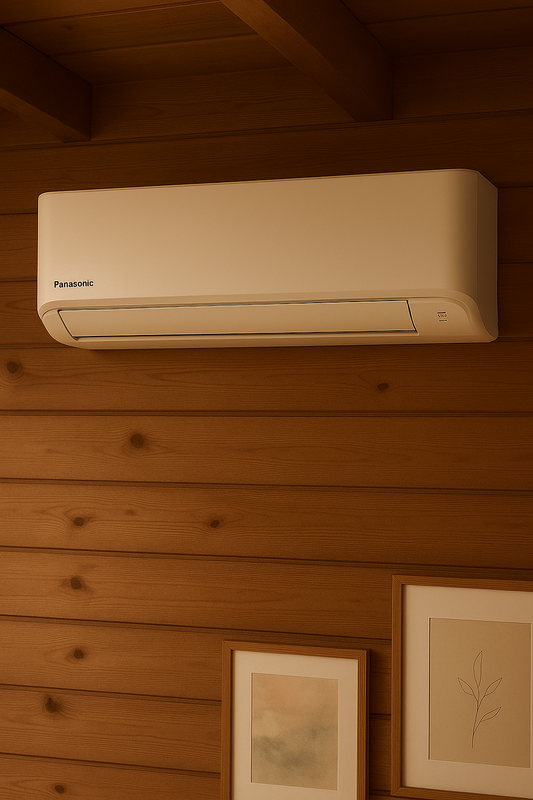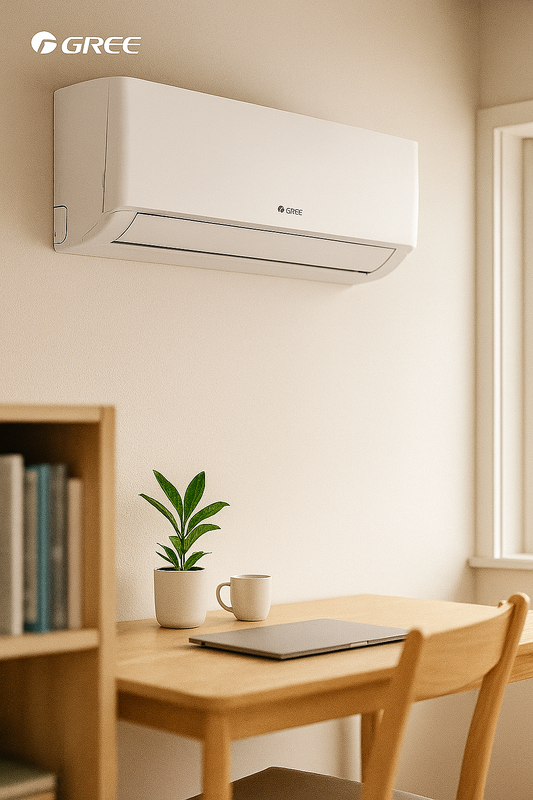Installationspaket Luftvärmepump: Allt du behöver veta
En installationspaket luftvärmepump är en viktig komponent för att säkerställa korrekt installation och drift av en luftvärmepump. I denna artikel kommer vi att utforska definitionen, fördelarna, användningsområden, relaterade tekniker och vanliga frågor kring installationspaket för luftvärmepumpar.
Definition och Bakgrund
Ett installationspaket för luftvärmepump innehåller vanligtvis alla nödvändiga komponenter och tillbehör för att säkerställa en korrekt och effektiv installation av luftvärmepumpen. Det kan inkludera saker som rör, isolering, monteringsfästen, elektriska kablar och eventuellt tillbehör för att ansluta pumpen till det befintliga värmesystemet.
Luftvärmepumpar har blivit allt populärare på senare år på grund av deras energieffektivitet och miljövänliga natur. De fungerar genom att utnyttja den omgivande luftens värme för att värma eller kyla ett utrymme, vilket gör dem till ett attraktivt alternativ till traditionella uppvärmnings- och kylsystem.
Fördelar och Användningsområden
Med rätt installationspaket kan en luftvärmepump installeras korrekt och säkert, vilket säkerställer optimal prestanda och lång livslängd. Genom att använda installationspaketet kan man vara säker på att alla nödvändiga komponenter är på plats och att installationen uppfyller alla relevanta säkerhets- och branschstandarder.
Luftvärmepumpar med installationspaket kan användas i en mängd olika miljöer, inklusive bostäder, kommersiella fastigheter och industriella anläggningar. Deras flexibilitet och energieffektivitet gör dem lämpliga för olika användningsområden och klimatförhållanden.
Relaterade Tekniker, Begrepp eller Variationer
Utöver installationspaket för luftvärmepumpar kan det finnas andra relaterade tekniker och begrepp att vara medveten om. Det kan inkludera tillbehör för att förbättra luftvärmepumpens prestanda, som till exempel smarta termostater, luftrenare eller system för zonstyrning.
Det är också viktigt att vara medveten om olika variationer av luftvärmepumpar, såsom luft-luftvärmepumpar, luft-vatten-värmepumpar eller hybridvärmepumpar. Dessa olika system har olika installationer och krav, och det är viktigt att välja rätt installationspaket för den specifika typen av luftvärmepump.
Vanliga Frågor (FAQ)
-
Behöver jag verkligen ett installationspaket för min luftvärmepump?
Ja, ett installationspaket är avgörande för att säkerställa korrekt installation och prestanda. -
Vad ingår vanligtvis i ett installationspaket?
Ett installationspaket kan innehålla rör, isolering, monteringsfästen, elektriska kablar och andra nödvändiga komponenter. -
Kan jag installera en luftvärmepump själv utan ett installationspaket?
Det rekommenderas starkt att anlita en certifierad installatör för att säkerställa korrekt installation och garantier för produkten.
Sammanfattning
Ett installationspaket för luftvärmepumpar är en viktig del av installationsprocessen för att säkerställa korrekt installation och drift. Genom att använda rätt installationspaket kan man garantera optimal prestanda och lång livslängd för luftvärmepumpen. Det är avgörande att vara medveten om olika typer av installationspaket och relaterade tekniker för att välja det bästa alternativet för den specifika situationen.
Installation Process
The installation process for a heat pump installation kit typically involves several important steps. These may include assessing the installation site, preparing the necessary tools and equipment, assembling the components, and connecting the heat pump to the existing heating or cooling system.
It is essential to follow the manufacturer's guidelines and any local building codes during the installation process to ensure safety and compliance.
Components and Accessories
Heat pump installation kits may contain a variety of components and accessories to facilitate the installation process. These can include refrigerant lines, condensate pumps, vibration isolation pads, and electrical disconnects. Understanding the purpose and function of each component is crucial for a successful installation.
Furthermore, selecting the appropriate accessories, such as outdoor protective covers or line-set insulation, can enhance the performance and longevity of the heat pump system.
Environmental Considerations
When installing a heat pump, it is important to consider the environmental impact and energy efficiency. Proper insulation of refrigerant lines, appropriate placement of outdoor units to minimize noise pollution, and responsible disposal of packaging materials are all aspects of environmentally conscious installation practices.
Additionally, integrating the heat pump system with renewable energy sources or energy management systems can further enhance its environmental sustainability.
Case Study: Residential Installation
In a residential setting, the installation of a heat pump and its associated kit may involve unique considerations. For instance, adapting the system to the existing ductwork, optimizing the location of indoor air handlers, and ensuring compatibility with the home's electrical system are critical factors to address.
Furthermore, educating homeowners about routine maintenance and operational best practices can contribute to the long-term success of the installation.
Training and Certification
Professionals involved in the installation of heat pump systems often undergo specialized training and certification programs. These programs equip installers with the knowledge and skills necessary to handle complex installations, troubleshoot issues, and adhere to industry standards.
By hiring certified professionals, customers can have confidence in the expertise and competence of the installation team.
Best Practices for Maintenance
Once the heat pump installation is complete, regular maintenance is essential to ensure optimal performance and longevity of the system. This may involve cleaning or replacing air filters, inspecting and cleaning coils, checking refrigerant levels, and lubricating moving parts as needed.
Establishing a maintenance schedule and adhering to manufacturer recommendations can minimize the risk of breakdowns and costly repairs, while also maintaining energy efficiency.
Cost Considerations and Budgeting
When planning for a heat pump installation, it's important to consider the overall cost, including the price of the installation kit, labor, and any additional materials or modifications required for the installation. Understanding the full scope of expenses and budgeting accordingly can prevent unforeseen financial strain during the installation process.
Furthermore, exploring available incentives, rebates, or financing options for energy-efficient installations can help offset initial costs and improve the overall return on investment.
Remote Monitoring and Control
Advancements in technology have enabled the integration of remote monitoring and control capabilities in heat pump systems. Through smart thermostats and mobile applications, users can remotely adjust temperature settings, monitor energy usage, and receive maintenance alerts, enhancing convenience and control over the system.
Integrating these features during the installation phase can provide added value and convenience for homeowners or facility managers.
Case Study: Commercial Installation
In a commercial setting, the installation of heat pump systems and associated kits may present unique challenges and considerations. Large-scale heating and cooling requirements, zoning considerations, and integration with building automation systems are critical factors that require specialized expertise for successful implementation.
Collaboration with experienced commercial HVAC contractors and system designers is paramount to ensure the seamless integration and performance of the heat pump system.
Regulatory Compliance and Permits
Before initiating a heat pump installation, it's crucial to research and adhere to local building codes, regulations, and permit requirements. Engaging with licensed professionals who are well-versed in regulatory compliance can streamline the approval process and prevent potential setbacks or fines due to non-compliance.
Thorough documentation and adherence to safety standards are integral aspects of securing necessary permits for the installation.
Enhanced Efficiency through Geothermal Systems
For applications where heightened energy efficiency is a priority, geothermal heat pump systems offer a compelling solution. By leveraging the stable temperature of the earth, these systems can deliver exceptional efficiency and cost savings over the long term.
Understanding the unique components and installation considerations for geothermal systems can open up opportunities for sustainable and efficient heating and cooling solutions.
Conclusion
The installation of a heat pump with a comprehensive installation kit encompasses a diverse range of considerations, from environmental impact to technological advancements. By embracing best practices, leveraging technological innovations, and engaging qualified professionals, the installation process can result in a reliable, efficient, and sustainable heating and cooling solution.


